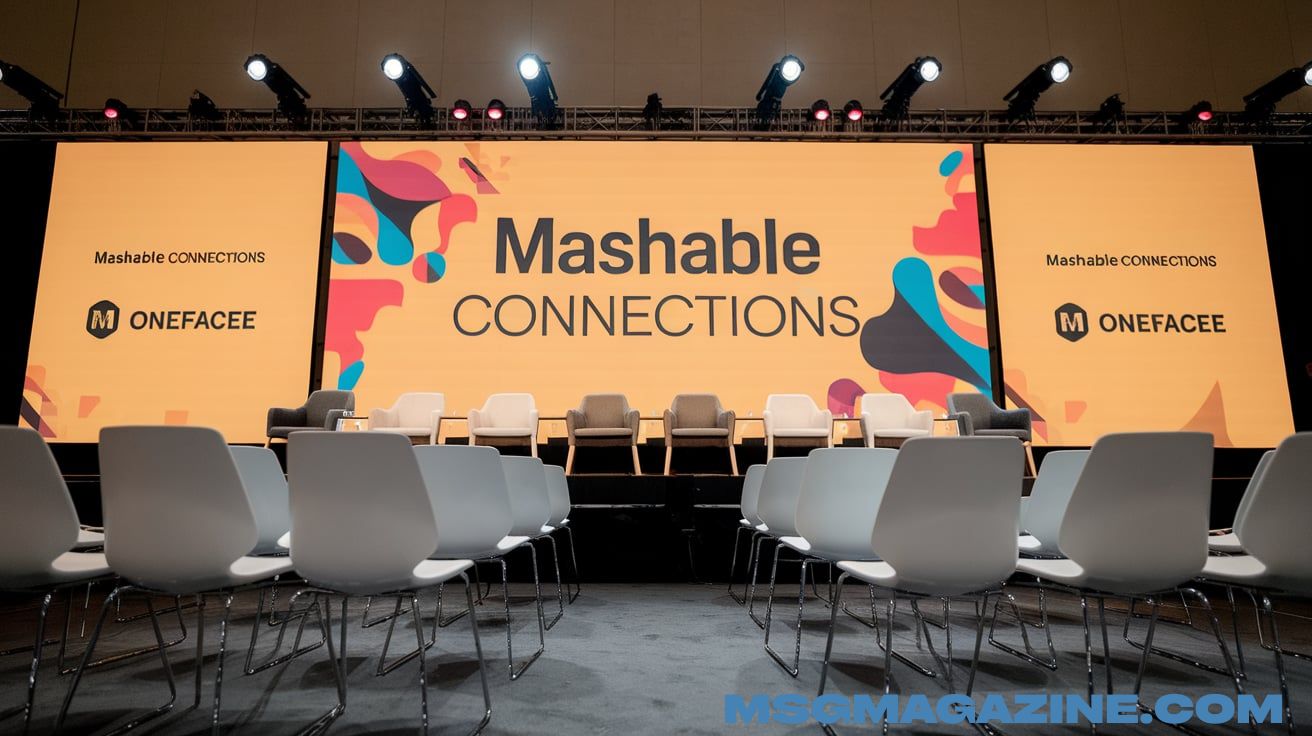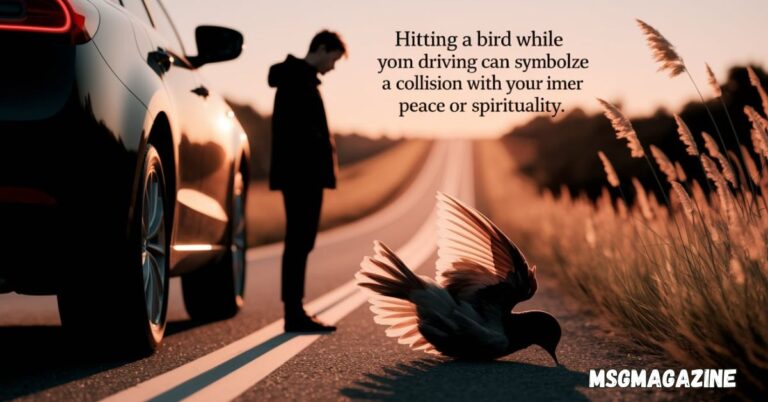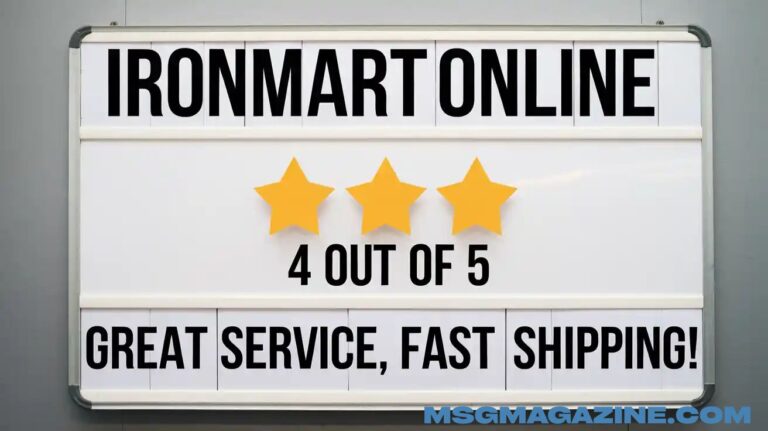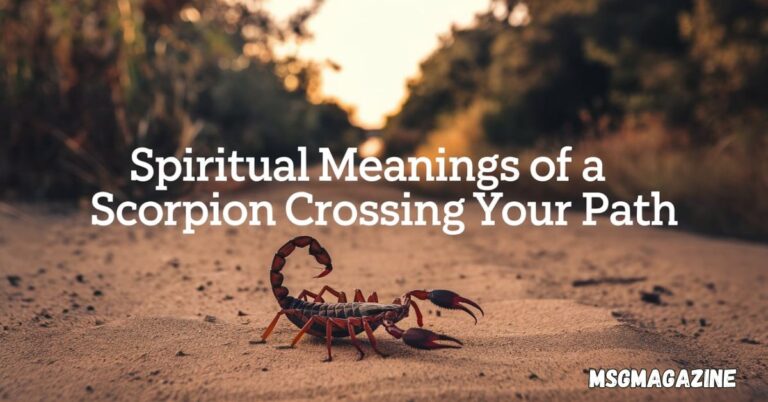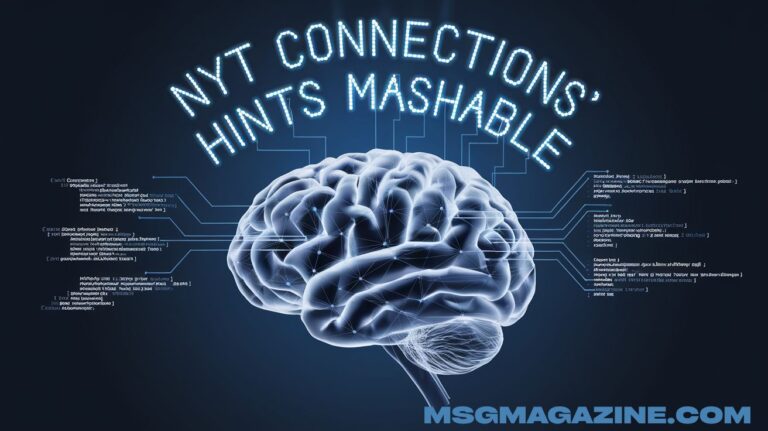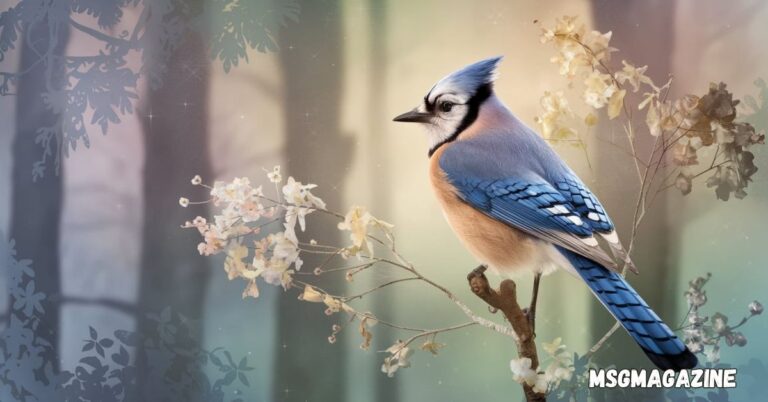Mashable Connections Hint is a daily clue guide that helps players solve the NYT Connections puzzle. It gives small hints without showing full answers. These hints help players find word groups faster and smarter.
Stuck on today’s puzzle? Feel like the words don’t connect at all? Mashable Connections Hint gives you a nudge in the right direction.
Every day, Mashable updates hints for the current puzzle. The hints start vague and get clearer as you scroll. This makes solving fun and less frustrating.
What Are Mashable Connections?
Mashable Connections refers to the helpful hints and tips shared by Mashable to assist players with the NYT Connections puzzle. These hints are not full answers or cheats. Instead, they’re soft clues that help you think in the right direction without giving everything away.
For example, instead of telling you that “canary,” “gold,” “lemon,” and “mustard” are all shades of yellow, the hint might simply say, “Look for a group related to colors.” That’s enough to get your brain thinking, which is exactly the goal.
Many players use the Mashable Connections hint every day. It has become a trusted tool to make the game more enjoyable while keeping the challenge alive. Because the hints follow a tiered system — starting general and getting more specific — you can choose how much help you want.
How the Mashable Connections Hints Game Works
Each day, Mashable posts a page dedicated to that day’s puzzle. The layout is designed to help without spoiling the fun. You’ll see general category descriptions at the top. These give you soft ideas like “types of fruit” or “tools,” but without listing the words. If you scroll down, you’ll get stronger hints, and finally, you can choose to see a full category if you’re completely stuck.
This hint system is built like a ladder. You climb one step at a time, and you choose when to stop. You can take a small hint and still solve the rest of the puzzle on your own, which feels great. This method keeps the puzzle hard enough to enjoy but easier to finish — even on days when the words seem completely random.
How Does the NYT Connections Puzzle Work?
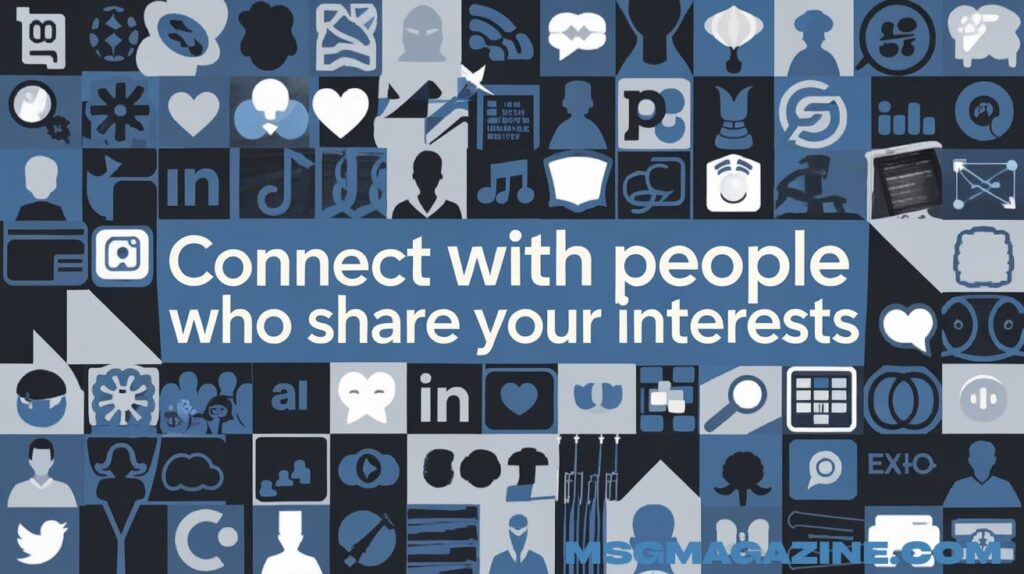
The NYT Connections puzzle was created by puzzle editor Wyna Liu and is published daily by The New York Times. It has quickly become one of the most loved daily word puzzle games across the United States.
Each puzzle gives you a grid of 16 words. Your job is to group them into four sets of four words that share something in common. These could be things like sports terms, types of fruit, or even words that come after “high.”
You only get four chances to make a wrong guess. After four mistakes, the game ends, and you’re shown the answers. So, it’s not just about knowledge — it’s about making smart moves and using the right puzzle-solving techniques.
Game Structure
The puzzle has four color groups that show how hard each set is:
| Color Group | Difficulty Level | Examples |
| Yellow | Easiest | Colors, animals, seasons |
| Green | Medium | Sports equipment, tools |
| Blue | Harder | Words with double letters |
| Purple | Trickiest | Wordplay, Homophones, idioms |
As you find a correct group, those words disappear from the grid, making the rest of the puzzle easier to solve.
Importance of Game Themes
The heart of this puzzle lies in the themes. Every group is connected by a shared idea, but sometimes the puzzle categories are not what they seem. They may be simple categories like “colors” or more hidden ones like “words that follow ‘power’” (like power line, power trip, etc.).
You have to be creative and flexible. Some connections are concept-based, while others require crossword-style thinking. This is what makes the game both a logic puzzle and a brain teaser. The more you practice, the more you begin to understand how the Connections puzzle works and what kinds of connections appear often.
Advanced Mashable Connections
Over time, the game gets more creative. Some Connections word puzzles use clever tricks like hidden words, double meanings, or even sound-based connections. This is where things get tough.
You might get a set like “bass, bow, tear, lead.” These words all have more than one pronunciation or meaning. This is an example of a Homophones or Wordplay group, and it often shows up in the purple category.
These types of puzzles rely on abstract connections, and that’s where many players get stuck. In these cases, the Mashable Connections hint becomes especially helpful. It can help you spot a tricky link that you may never see on your own.
What are the Benefits of Using These Connections Hint Mashable?
Using Mashable Connections hints is not cheating. It’s actually a smart way to learn and get better at the puzzle. It gives you a mental boost without removing the challenge. Below are the real benefits of using these hints wisely.
Improves Your Ability to Recognize Patterns
Every time you use a connections hint, you’re training your brain to think in new ways. Over time, you get better at spotting patterns in word choices. This improves your pattern recognition — a skill that helps with everything from reading to problem-solving.
According to a study by the University of Exeter, regular use of puzzle-solving strategies improves attention, reasoning, and memory. Just like physical exercise helps your body, this is a real brain workout.
Keeps the Puzzle Enjoyable and Challenging

Many players stop playing when a puzzle feels too hard. But when you use hints the right way, you stay in that sweet spot between too easy and too hard. This is called the flow state. It’s when your brain is focused, alert, and having fun.
You’re not looking for all the answers — just enough help to keep moving forward. That’s why game hints work so well. They save the fun while giving you a fighting chance.
Offers Community Interactions
Another great thing about the Mashable Connections hint is that it has created a strong community. Every day, people across the USA share their thoughts about the puzzle, talk about hard groups, or post their favorite “aha!” moments.
This kind of community puzzle solving builds a shared experience. In fact, research from the American Puzzle Society shows that people enjoy word games more when they talk about them with others.
Preserves the Game’s Integrity
Using hints helps without spoiling the satisfaction. It’s different from searching for full answers online. That feeling when the connection finally clicks? That’s called earned achievement — and it feels amazing.
By using only the hint system, you protect the puzzle’s magic while still getting help when you really need it.
Great for Mental Exercise
Puzzles like Connections are great tools for cognitive training. They activate parts of your brain that deal with language, logic, and memory. A study by the University of Michigan found that even 20 minutes of language puzzles a day can lead to stronger brain function.
Using Mashable Connections hints keeps you in the game longer. This means your brain gets more exercise and your thinking improves over time.
Read Also : Today’s NYT Mini Crossword Answers for August
Strategies for Effectively Solving Connections Hint Mashable
If you want to get better at how to solve NYT Connections, here are some strong strategies. These tips can help you finish puzzles faster and understand the logic behind them.
Analyzing the Grid
The first thing you should do is look carefully at the whole grid. Try to scan for words that clearly go together. Do you see colors? Tools? Country names? Take your time — grid analysis is your first step to finding the answer.
Identify Potential Categories
Next, look for word groupings that might share a theme. Try writing them down in groups or saying them out loud. This activates different parts of your brain and can reveal hidden word categories.
Test Groupings
Don’t be afraid to test a group early in the game. You get four chances to make mistakes. Each time you test a group, you learn more — even if it’s wrong. This builds your guessing strategy and helps narrow down the options.
Learn from Mistakes
Every mistake is a chance to improve. After a wrong group, think about what went wrong. Was your idea too broad? Too specific? Were you ignoring abstract connections or only thinking literally? The best way to grow is to reflect on your errors and try again.
Common Mistakes to Avoid in Mashable Connections
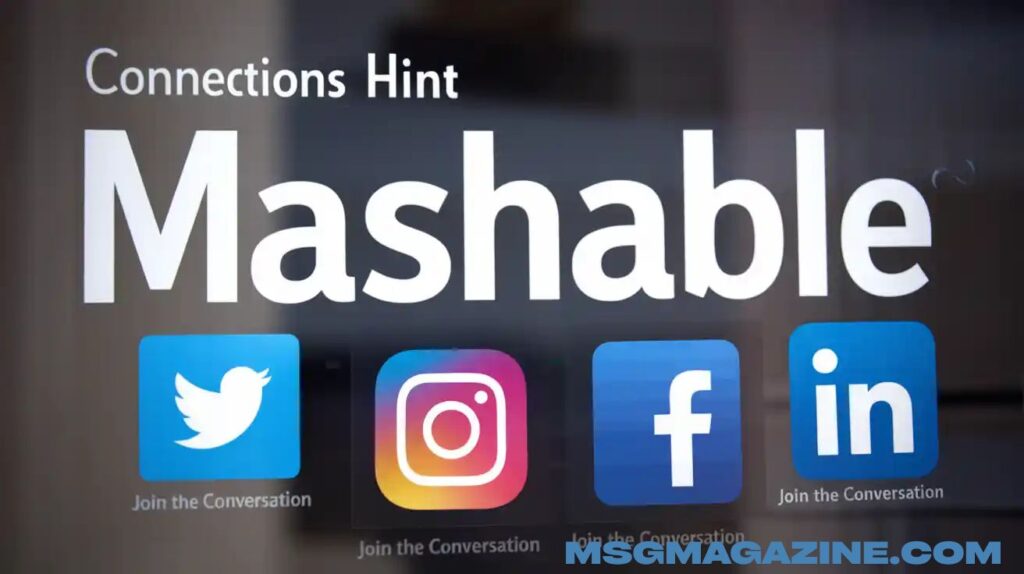
Even experienced players make mistakes. But knowing what to avoid can help you move faster through each puzzle.
Ignoring Wordplay
The hardest groups often include tricks like homophones, double meanings, or hidden word parts. Don’t always think literally. A word might look unrelated at first but still belong in a clever group. Watch out for wordplay in the purple category especially.
Focusing Too Narrowly
When we think we’ve spotted a connection, we often try to force unrelated words into it. This is called confirmation bias. If a group doesn’t work, let it go and explore new ideas. Stay open-minded and flexible in your thinking.
Relying on Exact Matches
Not every group is made of obvious matches. Sometimes, the connection is about words that can follow another word (like “make” or “run”). These are called connection pattern types, and they require a different way of thinking.
Overlooking Subtle Connections
Some themes are based on concept-based reasoning. They might refer to books, movies, music terms, or even tech words. These kinds of groups don’t stand out right away, so take a step back and think creatively.
Conclusion
The Mashable Connections hint is more than just a helping hand — it’s a smart tool to boost your skills, enjoy the puzzle more, and keep your brain sharp. With the right mix of observation, guessing, and strategy, you can solve even the trickiest puzzles.
Next time you’re stuck on a purple group or can’t quite see the theme, don’t give up. Use a hint, rethink your categories, and try again. Over time, your brain will get stronger, your solving speed will improve, and you’ll find yourself winning more often.
And remember — this isn’t just a daily challenge. It’s a fun, free way to grow your brain, connect with a community, and enjoy the joy of discovering something hidden. That’s the magic of the NYT Connections puzzle, and the power of a well-timed Mashable Connections hint.

